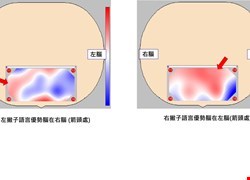- Home
- MedicalNews
- 50-Year-Old Stroke Patient with Depression Finds Improvement through Regenerative Laser Treatment
50-Year-Old Stroke Patient with Depression Finds Improvement through Regenerative Laser Treatment
A male individual in his fifties, working in the technology industry, experienced pain, low mood, and cognitive decline after suffering a stroke. Seeking medical help, he consulted Dr. Qian Jun, a neurologist at China Medical University Hsinchu Hospital. After undergoing two weeks of regenerative laser treatment, there was significant improvement in his pain, mood, and cognitive function. He is currently receiving ongoing outpatient treatment.
Dr. Qian Jun explained that in the past, traditional laser treatments required patients to receive injections before undergoing fiber-optic laser therapy. However, with regenerative laser treatment, it is non-invasive. The laser treatment is applied directly to the skin using a probe patch, delivering laser light that penetrates the veins without causing pain. This approach is particularly beneficial for sensitive individuals experiencing long-term pain, as it eliminates the need for daily injections, reducing pain stimulation and leading to better results.
Dr. Qian Jun further explained that regenerative laser treatment is a non-invasive, low-energy helium-neon laser therapy. By guiding the laser through fiber optics, it increases the oxygen-carrying capacity of blood cells. Firstly, it enhances the deformability of red blood cells, allowing them to reach the peripheral tissues, which aids in the repair and treatment of peripheral nerve damage. Secondly, it can regulate immune function and balance inflammatory conditions, thereby improving allergic, inflammatory, and painful conditions. Thirdly, it promotes cell regeneration and repair, assisting patients with chronic fatigue in alleviating their symptoms, and aiding in the closure and recovery of chronic wounds.
Dr. Qian Jun recommends regenerative laser treatment for patients suffering from chronic pain, fatigue, widespread body tenderness, headaches, fibromyalgia, chronic wounds, and ulcers. The treatment typically consists of a two-week course, administered at a fixed time each day. It is advised to combine the treatment with sufficient sleep and a balanced diet, as these measures can effectively improve the symptoms.







